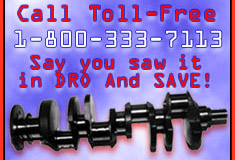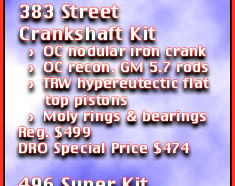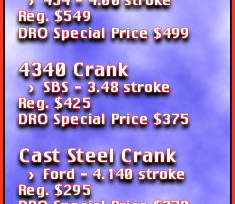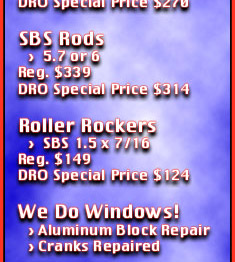|
|
 |
|
||||||
|
|
WJ: No, I'm a self-motivated person. We have to raise the bar as far as what our performance expectations are, but our motivation to win races is still the same. Q: What will it take to maintain staying on top in the points race? WJ: Consistency first and foremost. You have to win rounds to win races, and you have to win races to win championships. Consistency is what does that. Obviously, you have to have the performance level that's competitive to start with. You can consistently have the slowest car out there but you're not going to win. You have to have a car and team that has the performance level to win races, and then you have to remain consistent in winning those races. Q: Compare the Haas car to the Ness car. WJ: The Ness car has its particular areas where it operates in. At the cool tracks and extremely good tracks it's a fast racecar. Once we get to the hotter tracks, it gets out of its comfort zone, or we don't allow it to get into its comfort zone, whatever the case may be. What it boils down to is we tested the Ness car in pretty good in December in Florida. It had a bigger window to operate in under those conditions. We started noticing when the tracks started warming up we didn't have that window. So we went out to Atlanta when it was relatively hot prior to Columbus, unloaded the Haas car and found that under those conditions it had a pretty big window to operate in. It's just a matter of using the right tools, at the right place at the right time. The Ness car is a cool, high-traction racecar and the Haas car operates better under hotter conditions and slightly marginal racetracks. Right now we have Jerry working on a car that operates well at intermediate tracks that aren't real hot and not real cool, and we're going to test that before Indy. I can envision having two, three or even four cars for different conditions next year. Q: You tried that back in '97 didn't you? WJ: We did that to see what chassis characteristics seem to work best under different racetrack conditions. What our goal was then was to try and get a chassis that was the best average under those conditions. We also saw that you couldn't have a chassis that would be ideal under all the conditions. You could end up with a better average chassis, but you wouldn't have the awesome setup in all of the conditions. That's apparently what it's going to take. Look at the NASCAR racers. They have a super-speedway car, intermediate car, short-track car and a road-course car. We're approaching that arena right now. If that's what it's going to take to stay on top, then that's what we're going to do. Q: Do you envision going back to the Ness car when it starts cooling down again in September, October? WJ: Absolutely. Unless this intermediate Haas car shows some promise under those conditions. When we get to the cooler conditions we'll unload whatever weapon we need to win. Q: Do you and Kurt share information when you're racing each other? WJ: Absolutely. When we have to race each other, assuming it's not in the final round, one of us will advance to the next round. We obviously are in different lanes, which may have different characteristics, so we share that information on what it takes to get down each lane the bestIf we have the best idea of what's going on at any particular time, that also furthers our knowledge for building better cars for the future.  Copyright 1999-2001,
Drag Racing Online and Racing Net Source |
|
||||||
|
|
||||||||






